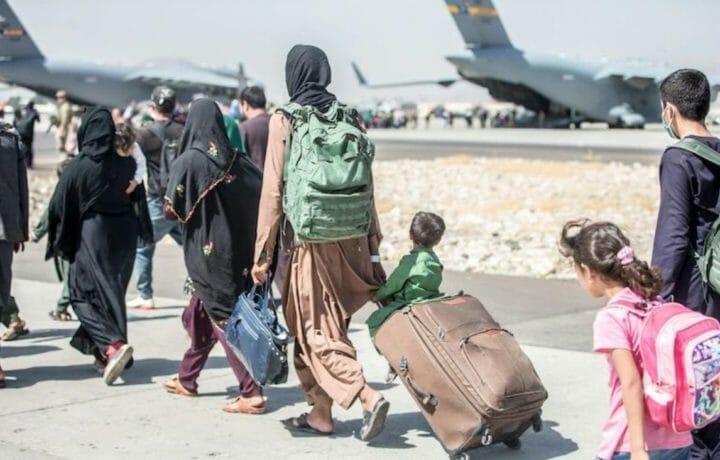In the West, a year went by seemingly fast. Perhaps Russia’s aggression against Ukraine and subsequent war provided the Afghan distraction. The rising and falling of COVID-19 and Monkey Pox likely have grabbed our attention throughout this past year. Maybe the media’s obsession with U.S. politics – or perhaps China’s Taiwanese desires have diverted our thoughts. Regardless, a year has passed, and Afghanistan refugees continue to flow out of the country.
Refugee Numbers Continue to Climb
After the aerial evacuations concluded in August 2021, the new Taliban regime’s crackdown forced many people associated with the previous administration to migrate overland to Pakistan or Iran. With tremendous disappointment, none of the Taliban’s promises have come to pass.
With Western embassies closed in Kabul, Afghans continue to journey to Pakistan to obtain a travel visa. High demand and corruption have increased the cost of a Pakistani visa to nearly $1,000 plus travel expenses. Only then can follow-on movement be procured.
According to the UN, over 2.6 million Afghans are registered refugees, representing one of the largest refugee populations in the world. This number reflects four decades of conflict, but the exodus size in the panicked days following the Taliban’s lightening takeover in August is not exactly known. US.. Military officials stated 124,000 American citizens and Afghan allies were evacuated prior and during the fall.
The Taliban have imposed more restrictions on women’s movements outside the home shortly after returning to power. The percentage of females working in Afghanistan shrank from 22% to 15% this past year. Enforcement of new regulations on clothing and laws forbidding access to public areas without a male guardian significantly confound these problems.
Basic services are still considered luxuries. The scarcity of electricity is a simple yet recurring challenge facing everyone. Medical facilities and hospitals require the use of generators and fuel prices increased 111% from last year, so keeping generators functioning has moved from necessity to luxury.
Leaving and resettlement continue to be challenges. Even after leaving, many are facing substantial red tape upon arrival in western countries. Many in our government believe thousands of Afghan security personnel, including special forces troops, took an easier route and fled to Iran with U.S. equipment and military knowledge during and after the Taliban takeover last year.
Brain Drain
During the mass exodus sparked by Taliban takeover, Afghanistan leadership called for Afghans to remain and help rebuild. Blaming the U.S. for encouraging “Afghan experts” to leave, a Taliban news conference promised a general amnesty, vowing that no harm would come to anyone in Afghanistan. With oppressive continued Taliban rule, a floundering economy, and lack of confidence, Afghanistan’s best and brightest are still fleeing. Most will likely never return.
Following tremendous international outcry, the Taliban in March of this year announced that girls’ high schools would open. As secondary schoolgirls gathered for their first day, the Taliban at the very last minute, reversed the ruling as young girls burst into tears. Adding insult to injury, the reversal has threatened international aid as girls’ education is a condition for assistance.
With the banning of secondary schools for Afghan girls, some have turned to the internet in a desperate bid to continue studies. However, online self-education is particularly challenging for those who can afford it, as the internet is monitored and there are deliberate interruptions. On-line meetings and testing are nearly impossible. Trying to gain an admissions interview is almost impossible.
Further, the brain drain has effectively depleted Afghan government ministries and institution of skilled manpower. Tamim Asey, a former Afghan deputy defense minister recently stated under Taliban rule, “Even the lowest-level positions in the civil service have been replaced with religious scholars. The Taliban views these positions as war bounty, to be distributed among followers.”
Unfortunately, the Taliban is still focusing on maintaining cohesion between factions, cracking down on public dissent and security issues. Despite more than $2 billion reported in tax revenue, security accounted for nearly 50% of spending, despite a lack of an insurgency against the Islamist state.
Currently, the outlook is not good for Afghanistan. The loss of international support, security challenges, climate-related issues and global food inflation are all contributing to the rapidly deteriorating economic situation. The UN recently announced that 97% of Afghan’s are at or below the poverty line. The U.S. and EU will provide nearly a billion dollars in humanitarian assistance to aid groups on the ground in Afghanistan.




